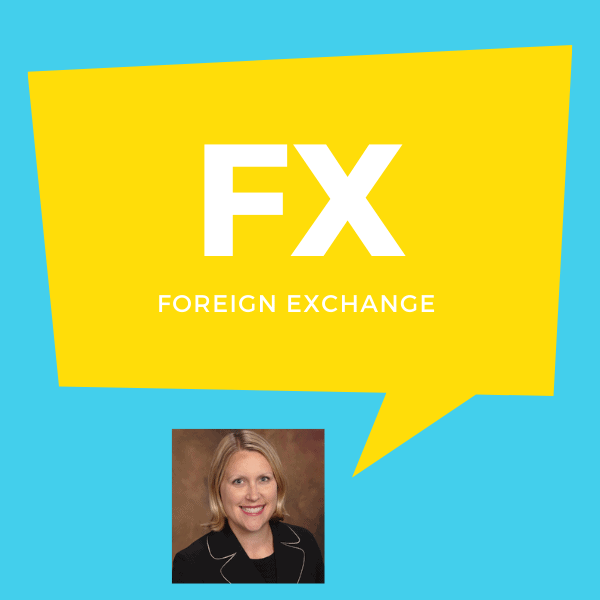
Lori Novak Shares 5 Things You Should Know About Foreign Exchange
Lori Novak is the Vice President of Foreign Exchange (FX) Sales and Trading at Associated Bank, where she advises a wide range of corporate clients on managing their currency risk arising from conducting business globally. She is also a wegg® board member and a wegg specialist on foreign exchange, international payments, and fx hedging. In this article, Lori has shared with us 5 crucial facts to get you up to speed on all things foreign exchange…
1. FX (forex, foreign exchange, or currency market) determines the relative values of different currencies. Until the popularization of internet trading, FX was primarily the domain of large financial institutions, multinational corporations, and hedge funds. Unlike stocks, futures, or options, currency trading does not take place on a regulated exchange, and it is not controlled by any central governing body. Immediate exchange of currencies is called spot trading since the exchange takes place “on the spot.”
2. Forex is the only financial market in the world to operate 24 hours a day, 6 days a week. The FX market runs from Monday morning in the Asia-Pacific time zone until Business closes on Friday afternoon in New York. The FOREX market doesn’t even close for holidays with the exception of New Year’s Day and even that depends on what day it falls on. It is often referred to as the market that never sleeps!
3. The forex market is comprised of over 170 different currencies. The FX market exists is to facilitate the exchange of one currency into another for multinational corporations that need to continually trade currencies (i.e., for payroll, payment for goods and services from foreign vendors, and mergers and acquisitions). However, the day-to-day corporate needs comprise only approximately 20% of the market volume. 80% of trades in the currency market are speculative in nature conducted by large financial institutions, multi-billion-dollar hedge funds, and individuals who want to express their opinions on the economic and geopolitical events of the day.
4. The forex market is the most liquid and fluid market in the world. The daily turnover for the forex market is 6.6 TRILLION U.S. dollars, way more than the daily trading volume of the world’s stock markets combined, which averages roughly $200 billion per day. It is so big that it can buy a car for each American household!
5. The United States dollar (USD) is on one side of 88% of all forex trades. The most traded currency pairs involve the seven most liquid currencies in the world, which are the four “majors”: EUR/USD (euro/dollar), USD/JPY (dollar/Japanese yen), GBP/USD (British pound/dollar), USD/CHF (dollar/Swiss franc) and the three “commodity” pairs: AUD/USD (Australian dollar/dollar), USD/CAD (dollar/Canadian dollar), NZD/USD (New Zealand dollar/dollar). A commodity currency is a currency that fluctuates when the world prices of primary commodity products move, due to these countries’ heavy dependency on the export of certain raw materials for income (for example, the Canadian dollar is closely tied to oil prices).
You can check out wegg’s TikTok business account to see our Global Gal’s feature on Lori’s valuable knowledge.




